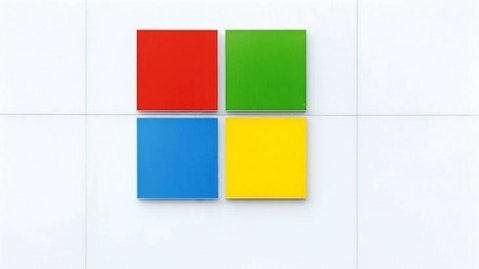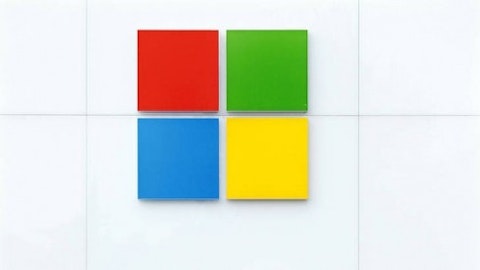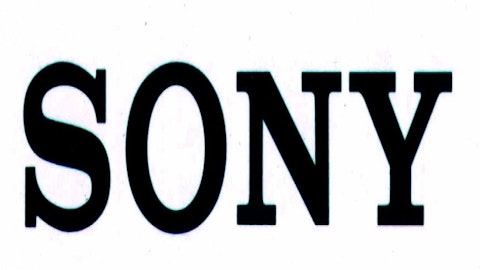This time around, Microsoft Corporation (NASDAQ:MSFT) and Sony Corporation (ADR) (NYSE:SNE) are fighting to remain competitive. Sony Corporation (ADR) (NYSE:SNE) launched its opening round with a $100 price cut that Microsoft had not anticipated. Let’s look at how this could play out.

Revisiting the past
Source: Microsoft
If you look closely at the chart, in the previous console generation, sales shot through the roof in the first year. The PlayStation 3 was priced at around $100 more than the Xbox 360 in the beginning years.
It seems that Microsoft Corporation (NASDAQ:MSFT) is pricing its console more expensively than Sony in order to capitalize on the anticipated pent-up demand for year-one sales. This is likely to lead to higher gross margins for Microsoft in the 2013 fiscal year.
Microsoft and Sony: Game theory
Let’s apply the theory of oligopolies to Microsoft Corporation (NASDAQ:MSFT) and Sony Corporation (ADR) (NYSE:SNE). Firms will have similar input costs. At Nash equilibrium – the point at which profits would be optimized – both firms sell the same or similar products at the same price and the highest price possible. Right now, if PlayStation 4 and Xbox One were both priced at $500, that would be considered the Nash equilibrium point because that’s the point at which profits would be maximized for both Sony and Microsoft.
Looking at the historical graph, first-year sales are always explosive. Sony Corporation (ADR) (NYSE:SNE) in the previous generation had a $100 price premium and still sold out. However, going into this current console generation, Sony did what Microsoft Corporation (NASDAQ:MSFT) did in 2005. It lowered prices first. In a Duopoly Payoff Matrix, one firm will intentionally lower prices in order to punish the other competitor.
There are two factors that a firm can control, which include production and price. Sony will increase production and sell at a lower price. Microsoft Corporation (NASDAQ:MSFT) will decrease production slightly, and increase its price. This will offset into what I would call dis-equilibrium. Microsoft will earn larger profits because Sony Corporation (ADR) (NYSE:SNE) would find it literally impossible to increase production at a point that could make up for the 20% decline on gross margin.
Eventually, in the theory of oligopolies, one firm will eventually have to lower its price down to what the other competitor is priced at. Chances are high that both will remain profitable. PlayStation 4 will have had a higher quantity of units sold, while the Xbox One will have more profit in the bank account (first year).
Following the holiday season, I find it extremely probable for both Xbox One and PlayStation 4 to be priced at $400 because this will be the new equilibrium point (point at which the market clears).
Microsoft Corporation (NASDAQ:MSFT) must lower prices in order to remain competitive even if it means a loss of profit. Following a price drop, neither company can raise the prices back up.
Sony breaks even
Let’s remember the sequence of events. First, both companies were able to observe each other’s products. At the E3 press conference, both companies’ decided to unveil the price.The Sony Corporation (ADR) (NYSE:SNE) spokesperson stated that the process of determining a price point takes many weeks if not months of effort (which is true). But what he doesn’t mention is that most of that time is determining the break-even point, and determining the point at which profits can be maximized.
Microsoft thought it had a key-advantage and went straight for profit-maximization hoping Sony would do the same. Instead, Sony announced a 20% haircut on the price that Microsoft quoted.
Following that, the crowds cheered. The average net profit margin in the consumer electronics sector is 6.17%. So if Sony took a 20% haircut, it means that Sony is near break-even or losing money.
Now Microsoft will have to compete with Sony in fiscal year 2014 with a 20% price cut of its own, and I don’t think either firm will push prices any lower. In an oligopoly, the firms will not compete in a market if it is not generating a profit. Because of this, I believe that the current profit margin that both Microsoft and Sony will experience on the next-generation consoles will be at around 5%, the industry-wide average.
Pricing over a life cycle
Microsoft will make more money than Sony Corporation (ADR) (NYSE:SNE) in year one. But in year two, both Sony and Microsoft will sell consoles at the same price point, leading to similar profit margins. The $400 price tag will remain for perhaps two to three more years.
Console-device demand will peak in the third or fourth year. Eventually, the profit margins for Microsoft and Sony will shrink in year three and four because prices will be dropped again in order to stimulate demand. To offset the decline in prices, component manufacturers like Advanced Micro Devices, Inc. (NYSE:AMD) will have to accept an even lower average selling price.
Advanced Micro Devices, Inc. (NYSE:AMD)’s premium pricing for processors and graphics will drop because it will become obsolete when compared to a desktop-computer component. Advanced Micro Devices, Inc. (NYSE:AMD) will have no choice but to cut the price. Eventually AMD will be hit with smaller gross margins (the Qualcomm Snapdragon sells at $20 per unit, just so you can get an idea of how low prices can go).
Conclusion
Microsoft will earn more than a 20% profit margin in its gaming segment in the first year, but it is likely that the profits will be at around 5% in the following fiscal year (basically 2014). Investors in Sony Corporation (ADR) (NYSE:SNE) shouldn’t anticipate a boost in profitability or in earnings from the game segment because of its pre-emptive 20% price cut at E3. AMD will experience diminishing returns from its involvement in both consoles.
The article Microsoft and Sony: What Happened Behind E3 originally appeared on Fool.com and is written by Alexander Cho.
Alexander Cho has no position in any stocks mentioned. The Motley Fool owns shares of Microsoft. Alexander is a member of The Motley Fool Blog Network — entries represent the personal opinion of the blogger and are not formally edited.
Copyright © 1995 – 2013 The Motley Fool, LLC. All rights reserved. The Motley Fool has a disclosure policy.



